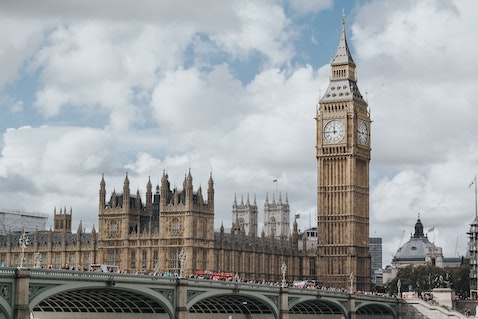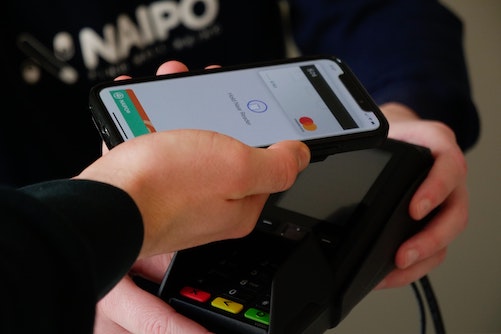Table Of Contents
Are you in favor of living in a country where cash isn’t king? Where its citizens don’t carry cash and instead use other forms of payment to make purchases? Going cashless isn’t out of the ordinary. Popular forms of cashless payment include the use of credit cards, cryptocurrencies, and contactless payments.
It might not be entirely possible for a country to go completely cashless as using the alternative modes of payment carry charges and the risk of incurring late payment fees or penalties. In many cases, paying with cash remains a better, more practical option.
However, there are a few countries that appear to be making the slow transition to going cashless.
United Kingdom
Let’s start with the country that leads the world in advocating and accepting cashless payments – the United Kingdom.
Credit cards, online payment platforms, and other methods of contactless payment have slowly become the preferred mode of payment in the U.K. since 2010.
According to data published by the Guardian, since 2010, cash payments in the U.K have decreased by 70%. In contrast, the use of debit cards, credit cards, checks, and direct debit payments have continued to increase in popularity.
A survey by credit card giant Mastercard has revealed a 97% increase in the use of credit cards throughout Europe but particularly in the U.K.

If you plan to take public transportation in the U.K, be advised that cash is no longer accepted. You might also be hard-pressed to find Automated Teller Machines as the number of ATMs in the U.K has significantly decreased.
Sweden
After the United Kingdom, Sweden comes on the list as the country with the highest possibility of becoming a cashless country. Presently, only 2% of transactions carried out in the country are paid with cash and a high 85% of Sweden’s citizens do online banking.
A big reason why Sweden can comfortably go cashless is that it is one the most technologically advanced countries in the world. An example is Sweden’s development of Swish, a popular app used by 50% of Swedes to make payments.
The country even passed a law that authorized business establishments to require customers to pay with only cashless methods. It’s estimated that only 20% of sales in Swedish businesses were paid with cash.
In fact, the Swedish government has identified a specific date when the country will go completely cashless – March 24, 2024.
China

China and its population of 1.4 billion people have been embracing the cashless society lifestyle for quite some time now.
However, unlike the United Kingdom and Sweden, China tends to prefer other forms of cashless payment over credit and debit cards.
The first method of cashless payment that’s popular in China is the use of online payment apps such as WeChat Pay and AliPay; apps that were developed by Alibaba.
The second popular cashless payment method is the use of QR codes. A visit to China will expose you to a large number of retailers and other business establishments advocating the use of QR codes as payment.
However, China’s move toward going cashless has been met with resistance from the People’s Bank of China (PBC), the country’s Central Bank.
The PBC’s intentions for encouraging cash payment stems from its drive to protect the value of the Yuan as well the rights of the people to pay with cash.
In 2020, the PBC penalized 16 public and private organizations for refusing to accept cash payments.
What About The United States?
The big question in the world of Finance Technology (FinTech) is if the United States – the world’s most powerful economy – will go cashless.
For now, with 70% of Americans still preferring to pay with cash, it seems that the United States has pumped the brakes on becoming the most powerful cashless economy in the world.
Likewise, a number of cities such as Massachusetts, Philadelphia, and New Jersey have strongly pushed back against the drive of becoming cashless societies. How strong? Their respective federal governments have enacted laws prohibiting businesses from preventing consumers from paying with cash.
However, there’s no question that more and more Americans are making the shift to cashless modes of payment – slowly but surely.
Why Is There A Growing Demand For Going Cashless?

For some consumers, paying with cash is the more practical way of making purchases because they can manage their debt and not worry about fees and late payment penalty charges.
However, cashless payment has advantages that benefit the consumer, the business, and the economy.
First, keeping less cash in the store lowers the risk of theft, the incidence of accepting counterfeit currency, and the cost of security.
Second, transactions are completed faster when done cashless compared to cash. The waiting time for customers is shorter and it’s easier to reconcile payments received with the current inventory level.
Third, cashless payment methods make it faster and easier to collect tax payments for the government.
Conclusion: What Is The Future Of Cashless Payment?
The value of going cashless has grown higher because of the pandemic. Businesses have continued to streamline operations by shutting down their physical locations and migrating operations online.
Secondly, despite the availability of vaccines, people continue to be fearful of contracting the coronavirus. Economies have slowly opened up and people have come out of their homes but many still prefer payment methods that require less physical contact.
Also, the pandemic has caused joblessness worldwide. As people struggle to find work, having cashless methods of payment has made it possible to cover the cost of living.
Finally, the pandemic has increased the demand for remote employees. More businesses are hiring virtual assistants, freelancers, work-from-home professionals, or have integrated telecommuters in the workforce.
Remote employees prefer to be paid electronically usually via payment platforms such as Zelle, PayPal, and ApplePay.
If any, the pandemic has made more economies realize that going cashless might be the way of the future. Perhaps it would be safe to say that a cashless society is a by-product of the new normal.